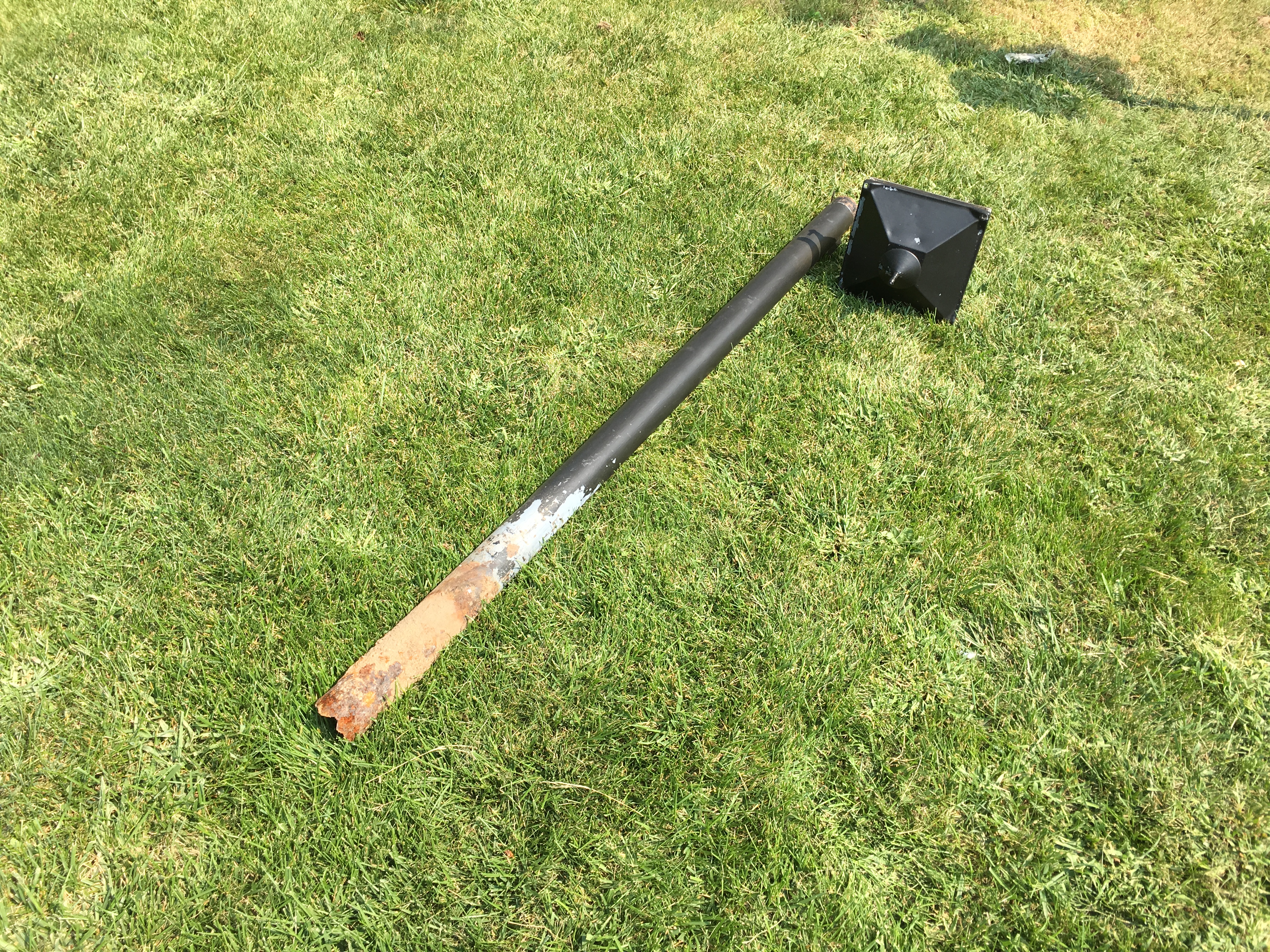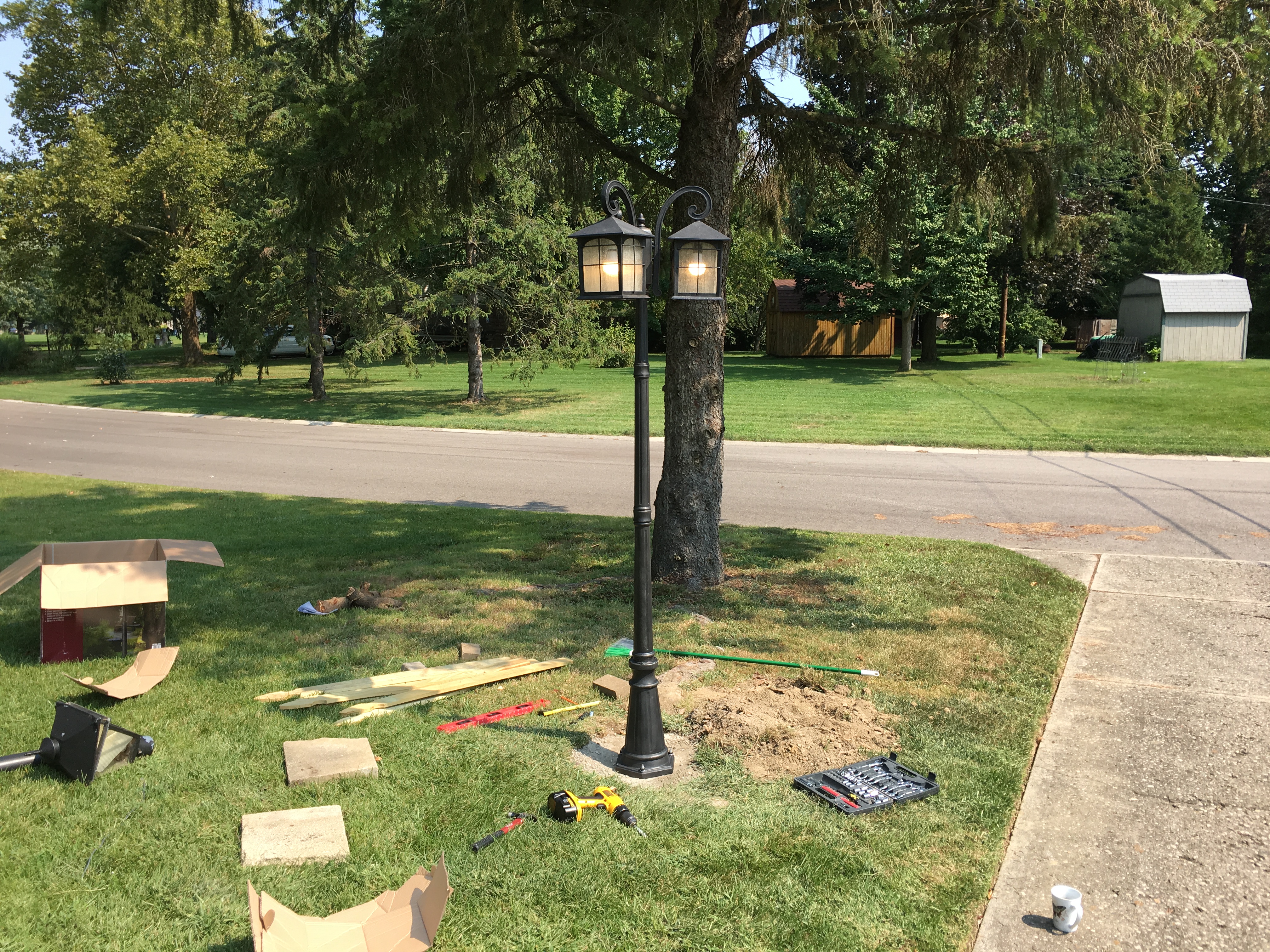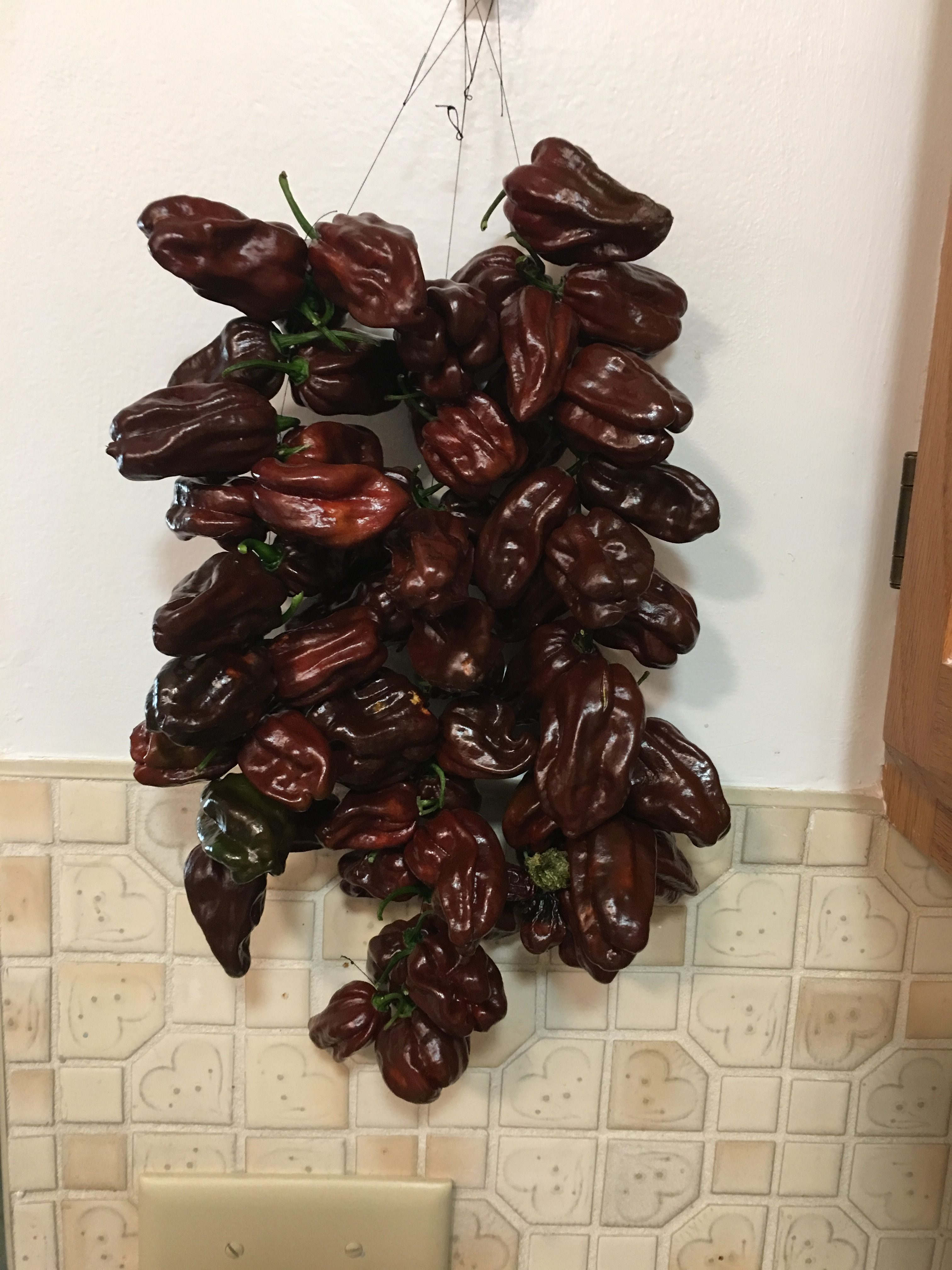The house has a street light, or it did anyway. It survived the winter, but shortly thereafter rusted out and ceased to function. The glass panes had at one point been replaced with ugly plastic cutouts. The cutouts were never sealed into place, and I was constantly putting them back after the wind would dislodge them. This no doubt expedited the light’s end, since water was allowed to invade its innards.
I had often wondered why the plastic panes were there to begin with. I found out during the course of my project when the village elder came over to see what I was doing. He explained that the panes’ replacement coincided with the delinquent neighbor’s kid’s acquisition of a BB gun. Lovely.
Regardless, the lamp was in the plans for replacement, as even when it did function, it was still an ugly steel pole whose base had unevenly sunk, causing the setup to lean irritatingly towards the driveway. It looked pretty bad–bad enough that apparently I never got a good photo.

And so, armed with shovel and a brief moment of motivation, Liz went out to wage war on the derelict illuminating apparatus. Then she hit a tree root, got tired, then became disheartened after discovering the lamp was cemented a couple feet down. It wasn’t good cement, either. It crumbled upon being struck with the shovel. So then we had not just an ugly and non-functioning lamp, but now an ugly and non-functioning lamp and a hole. Liz abandoned the project, which was no doubt her plan all along, leaving me to tackle it on my own. She also rolled her ankle and collapsed in the yard–something which may have sapped her motivation.
Axe, mattock, shovel, and determination eventually yielded a complete hole around the lamp, but the pole went deep, there was a lot of concrete, and I was wary of severing the electrical line. Then I examined the pole where it currently protruded from the mass of masonry. It was really rusted. I pushed on it and it leaned further. Then I put my full weight against in and down it went, snapping off at the bottom and preserving the electrical wire–a fortuitous shortcut.

It was at this point that I recounted a discussion we had prior to digging–was the power off? I recall her saying that it was, but she insisted that she said she didn’t know. It’s obvious I should have clarified, or at least have gone to check myself, for when I began to wrench the pole free, an exposed and very much energized wire contacted the steel frame. Now, I had had the good sense to don leather gloves first, which insulated me, but the resultant shower of sparks out the top and into my face was nonetheless disconcerting. This is when I dropped the pole in a reflexive panic of self-preservation and we had a revisit of the aforementioned conversation. I then turned off the power, removed the pole, tested the line with a volt meter, and capped the exposed wire.
Then it was off to Lowe’s! Alas, it was apparently a popular year for street light replacements, as they were completely sold out of the one we wanted. So it was off instead to Home Depot, who did have a light we liked.
Back home, I pondered the instructions. I was pleased to see that I would not be required to drill down 3 feet. Instead, the light came with a simple mount for installing into existing concrete. Luckily, we had many bags of quickcrete–leftovers from the fencing install. I poured a new base, effectively raising it to the desired height. Then I leveled it, and waited overnight (it called for a 4-hour setting time).

The next day, I checked the wire. This would all be for nothing if the line had gotten damaged. Fortunately, it was still good. And so, I assembled the light. I had to assemble it completely so I knew how to orient the base. It was slightly off, but that was a minor irritation. I drilled the mount holes according to the instructions and set the bolts. Then I attached the pole. The lamp is top-heavy, and that made me nervous, considering there’s only 3 bolts, using a friction-anchor system, each 3 inches deep. But I suppose I’ll trust to the light’s engineering. The top wobbles, but the base is sound.

I also assured Liz that I wouldn’t use white bulbs. I used 3, 100-watt equivalent 2700K LED bulbs.

It does glow nicely, emulating a vintage street lamp. And my fears were put at ease when that night a front moved through and hammered the fixture with strong wind and rain. Hopefully it’ll last for years to come.
–Simon




